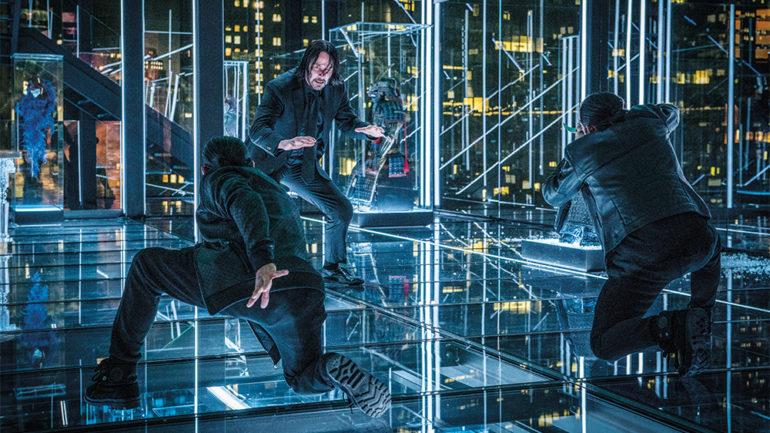‘John Wick: Chapter 3’ Tones Down the Blood and Gore to Keep Look ‘Totally Real’
By Calum Marsh
LOS ANGELES (Variety.com) – When Jeff Campbell, a visual effects supervisor with VFX studio Spin, initially set to work on the first “John Wick,” the 2014 action thriller from director Chad Stahelski and writer Derek Kolstad, he started with an industry-standard test: Establish a single, simple kill effect meant to get a sense of the look of the violence the filmmakers were after. “We did different levels of blood and gore,” Campbell remembers. “Everything up to the look of ‘300’ (2006), where it’s slo-mo blood flying everywhere.”
What Campbell found was surprising: Stahelski and Kolstad, both former stuntmen, asked for the violence to be stripped down, understated and “totally real.” “They wanted us to dial it all back, [using] just a little blood mist and muzzle flashes,” he says. “These are stunt guys, right? They claim they have seen all these effects before. They’ve witnessed broken limbs, gunshots. They’d sometimes catch us and say: ‘That’s not what a gunshot looks like’ or ‘No, the limbs shouldn’t break like that.’”
One of the striking things about the “John Wick” movies, including “John Wick: Chapter 3 — Parabellum,” which Lionsgate released May 17, is this commitment to authenticity when much of what happens in the films is over-the-top. The violence in the “John Wick” series is often brutal, as Keanu Reeves, playing the titular hit man, cruises the streets on quests of ruthless vengeance. But from the beginning, Stahelski and Kolstad have tempered their approach.
“A lot of times when you’re doing special effects for action movies, when someone gets shot, the blood explodes out toward you, toward the camera,” says Kirk Brillon, who was visual effects supervisor on 2017’s “John Wick: Chapter 2.” “But when you’re actually shot by a bullet, the blood’s coming out the back.”
That means that all the gore and viscera “is mostly hidden by the body,” Campbell notes. The “John Wick” movies are true to this detail. “The blood’s gonna be there,” Campbell says, “but it’s gonna be subtle, and it’s gonna be behind them.”
This requires VFX artists like Campbell and Brillon — and the four VFX supervisors on the current film, Robert Nederhorst, Christian Irles, Sid Jayakar and Keith Sellers — to get creative. Campbell recalls having to put a lot of effort into the blood mist, which spurts out from victims in a little cloud, as well as the exit wounds, which they expand digitally. For the most realistic look, the artists favor shooting fake blood on a black or green screen “so we can isolate it and add it to the film,” explains Campbell, who keeps syringes of fake blood in his office. “Sometimes I’ll just squirt it in the air and add it to a shot,” he says. Adds Brillon: “Blood days are my favorite days on set.”
Campbell points out that in a film as stylish as “John Wick,” depicting gunshots to the head are a particular challenge to VFX artists. Brains exploding out of a skull might “end up looking like worms,” while the bursts of blood can have “bad highlight matching” that makes the result look far too “candy-colored” on-screen.
Brillon says the most important thing to avoid when making blood effects is comparisons to the battle scene in comedy classic “Monty Python and the Holy Grail,” in which a knight’s limbs are all lopped off and blood gushes out even as the character diminishes the severity of his injuries. “‘It’s just a flesh wound!’ Brillon says, quoting the film. “You want to avoid that.”

